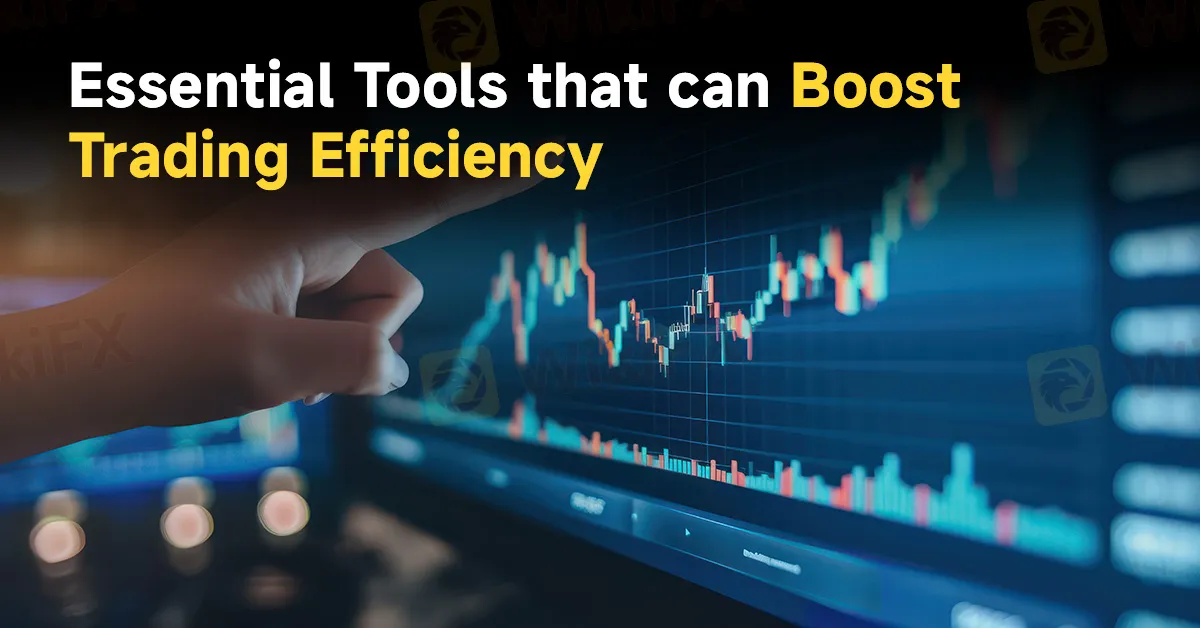简体中文
繁體中文
English
Pусский
日本語
ภาษาไทย
Tiếng Việt
Bahasa Indonesia
Español
हिन्दी
Filippiiniläinen
Français
Deutsch
Português
Türkçe
한국어
العربية
Essential Tools that can Boost Trading Efficiency
Abstract:Whether you're a novice or seasoned trader, integrating some useful tools into your trading routine can significantly enhance your performance and overall efficiency.

Successful trading requires more than just market knowledge and intuition—it demands the right tools to analyse data, make informed decisions, and manage risks effectively. Whether you're a novice or seasoned trader, integrating the following tools into your trading routine can significantly enhance your performance and overall success.

An economic calendar is a fundamental tool that provides real-time updates on key economic events and indicators from around the world. It helps traders anticipate market movements influenced by economic releases such as GDP reports, employment figures, interest rate decisions, and consumer confidence indexes. By staying informed about scheduled economic events, traders can adjust their strategies accordingly and avoid unexpected volatility.

Technical analysis software offers comprehensive charting tools and indicators that help traders analyse price movements, identify trends, and predict future market behaviour. Popular platforms like MetaTrader 4 (MT4) and TradingView provide customizable charts, drawing tools, and a wide range of technical indicators such as moving averages, MACD, and RSI. These tools empower traders to make data-driven decisions based on historical price patterns and market trends.

Staying updated with the latest financial news and market sentiment is crucial for making informed trading decisions. News aggregators like Bloomberg, Reuters, and CNBC provide real-time news updates, analysis, and expert opinions on global markets, economic developments, and geopolitical events. Additionally, market sentiment tools, such as sentiment indicators or social media sentiment analysis tools, gauge the mood of market participants towards specific assets or sectors, helping traders assess potential market movements.

Effective risk management is essential for preserving capital and minimizing losses in trading. Risk management tools include position size calculators, stop-loss and take-profit orders, and risk-reward ratio calculators. These tools help traders determine appropriate trade sizes relative to their account balance, set predefined exit points to limit losses, and assess potential profitability relative to risk exposure.

Maintaining a trading journal or using analytics platforms like MyFXBook or TradingDiary Pro allows traders to track and analyse their trading performance systematically. By recording trade details, including entry and exit points, position sizes, and reasons for trade decisions, traders can identify patterns, strengths, and areas for improvement in their trading strategies. Analytics platforms provide comprehensive performance metrics, equity curves, and statistical analyses that facilitate informed decision-making and continuous improvement.

Continuous learning and networking with fellow traders can accelerate skill development and provide valuable insights. Educational resources such as webinars, online courses, and trading books offer in-depth knowledge on technical analysis, fundamental analysis, risk management strategies, and trading psychology. Participating in trading communities, forums, and social media groups allows traders to share experiences, exchange ideas, and stay updated on market trends and best practices.
Incorporating these essential trading tools into your trading routine can significantly enhance your efficiency, effectiveness, and overall success as a trader. From real-time economic updates to advanced technical analysis and risk management tools, each tool plays a crucial role in empowering traders to make informed decisions and navigate the complexities of financial markets with confidence.

Disclaimer:
The views in this article only represent the author's personal views, and do not constitute investment advice on this platform. This platform does not guarantee the accuracy, completeness and timeliness of the information in the article, and will not be liable for any loss caused by the use of or reliance on the information in the article.
Read more

The January Effect of 2025 in Forex Markets
Like other financial markets, the forex market is influenced by various factors, including economic data, geopolitical events, and market sentiment. However, one often overlooked factor is seasonality—patterns that recur at specific times of the year. One such seasonal phenomenon is the "January Effect," which can have a notable impact on currency trading.

OPEC's Profound Influence on the Oil Market
At present, oil prices remain relatively stable, but global economic recovery and shifting market demands continue to drive price fluctuations. Amid an uncertain global economic and geopolitical landscape, OPEC’s policies and actions remain key determinants of oil prices.

What Euro Investors Can't Afford to Miss
For euro investors, geopolitical factors, inflation data, and the European Central Bank's policy direction will determine the market trends over the next few months.

How Big is the Impact of the USD-JPY Rate Gap on the Yen?
The U.S. Federal Reserve's repeated rate cuts and the narrowing of the U.S.-Japan interest rate differential are now in sight. So, why is the U.S.-Japan interest rate differential so important for the yen’s safe-haven appeal, especially when global economic uncertainty rises?
WikiFX Broker
Latest News
Think Before You Click: Malaysian Loses RM240,000 to Investment Scam
Lawsuit Filed Against PayPal Over Honey’s Affiliate Fraud
What Are The Top 5 Cryptocurrency Predictions For 2025?
XRP Price Prediction for 2025: Will It Hit $4.30 or More?
Dr. Sandip Ghosh, Ex-RG Kar Principal, Involved in Multi-Crore Scam
OPEC's Profound Influence on the Oil Market
Just2Trade: SAFE or SCAM?
The January Effect of 2025 in Forex Markets
New York becomes first US city with congestion charge
Currency Calculator






